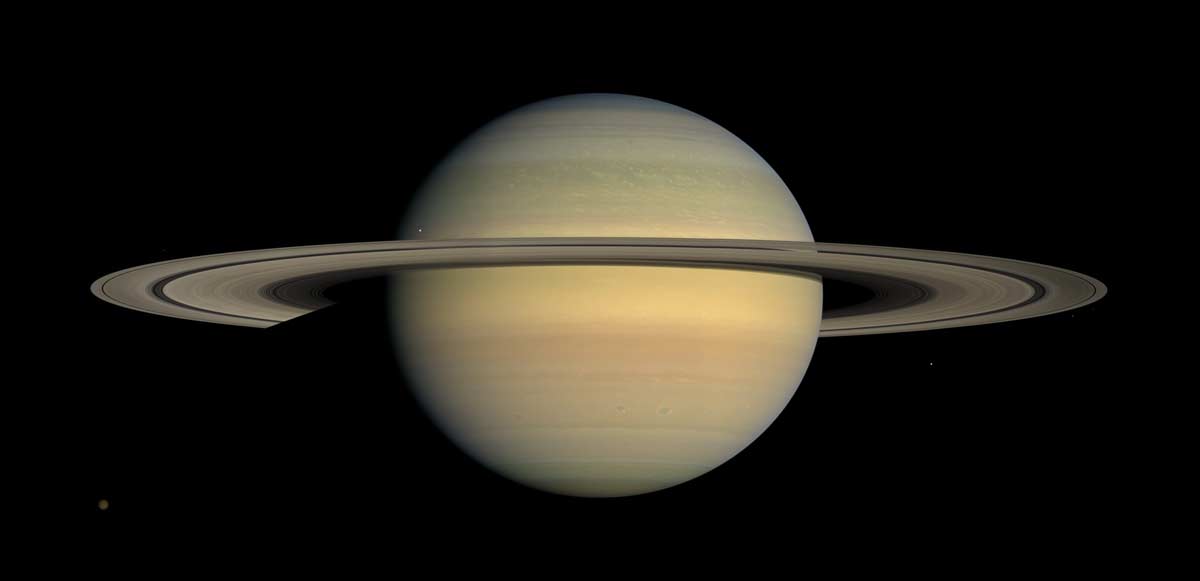
Astronomers have pinned down the position of Saturn and its many moons with unprecedented precision, a breakthrough that should aid spacecraft navigation and basic physics research down the road.
The researchers used the Very Long Baseline Array (VLBA) — a system of radio dishes set up in Hawaii, the continental United States and the Virgin Islands — to track the signals coming from NASA's Cassini spacecraft, which has been orbiting Saturn since 2004.
After combining this information with data from NASA's spacecraft-tracking Deep Space Network system, the study team was able to pinpoint the Saturn system's center of mass, or barycenter, within about 2 miles (3.2 kilometers). The measurement represents a 50-fold improvement over the best estimates provided by ground-based telescopes, NASA officials said.

"This work is a great step toward tying together our understanding of the orbits of the outer planets of our solar system and those of the inner planets," study leader Dayton Jones, of NASA's Jet Propulsion Laboratory in Pasadena, California, said in a statement.
"The improved positional information will help enhance precise navigation of interplanetary spacecraft and help refine measurements of the masses of solar system objects," NASA officials wrote in the same statement. "It will also improve predictions of when Saturn or its rings will pass in front of background stars — events that provide a variety of research opportunities for astronomers."
The study has been going on for years, and it has already benefited the Cassini team. The spacecraft's handlers began using the improved position data in 2013 to plan Cassini's maneuvers, resulting in propellant savings, NASA officials said.
Jones and his colleagues will continue to study and refine Saturn's position through the end of Cassini's mission in September 2017. They also plan to perform similar work with Jupiter when NASA's Juno probe arrives at the giant planet in 2016, NASA officials said.
Get the Space.com Newsletter
Breaking space news, the latest updates on rocket launches, skywatching events and more!
Follow Mike Wall on Twitter @michaeldwall and Google+. Follow us @Spacedotcom, Facebook or Google+. Originally published on Space.com.
Join our Space Forums to keep talking space on the latest missions, night sky and more! And if you have a news tip, correction or comment, let us know at: community@space.com.

Michael Wall is a Senior Space Writer with Space.com and joined the team in 2010. He primarily covers exoplanets, spaceflight and military space, but has been known to dabble in the space art beat. His book about the search for alien life, "Out There," was published on Nov. 13, 2018. Before becoming a science writer, Michael worked as a herpetologist and wildlife biologist. He has a Ph.D. in evolutionary biology from the University of Sydney, Australia, a bachelor's degree from the University of Arizona, and a graduate certificate in science writing from the University of California, Santa Cruz. To find out what his latest project is, you can follow Michael on Twitter.









